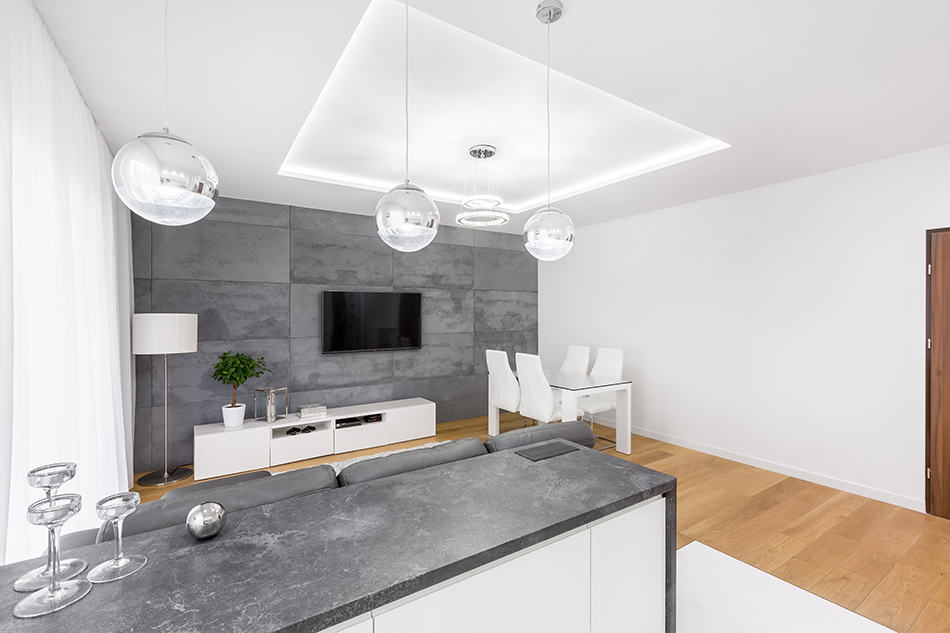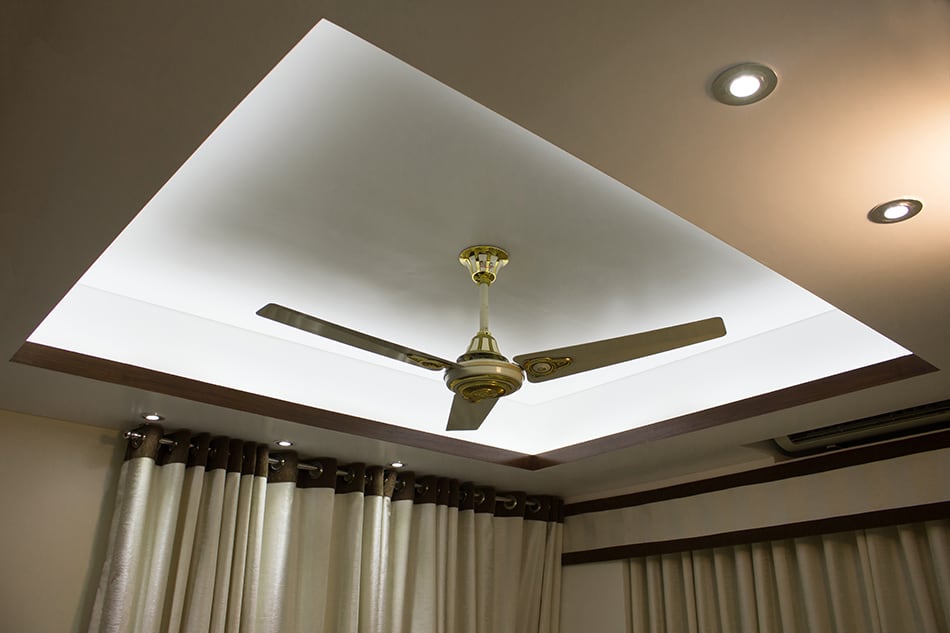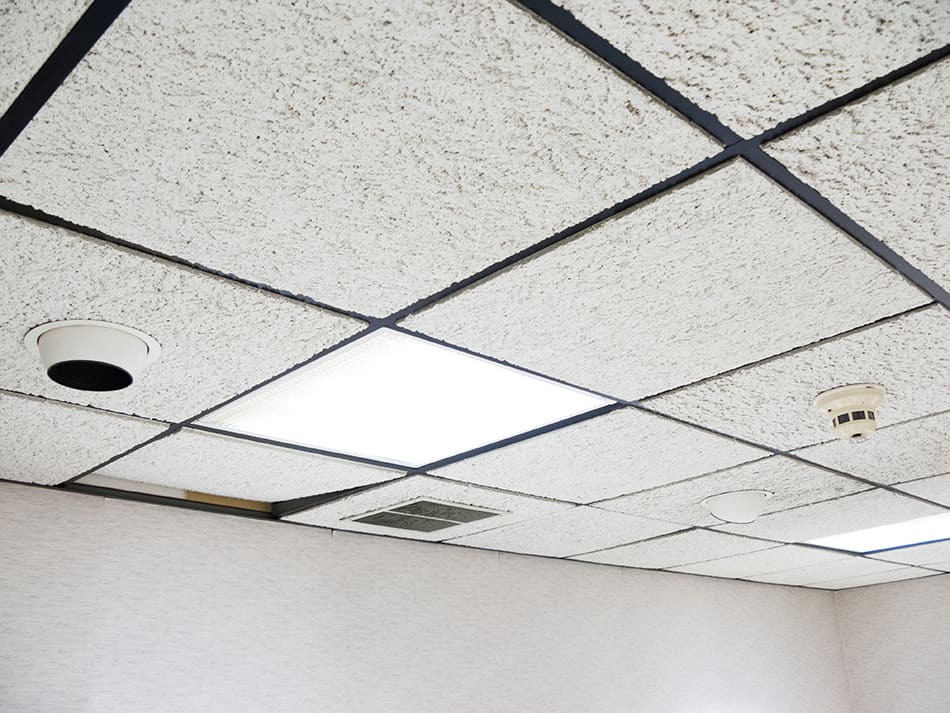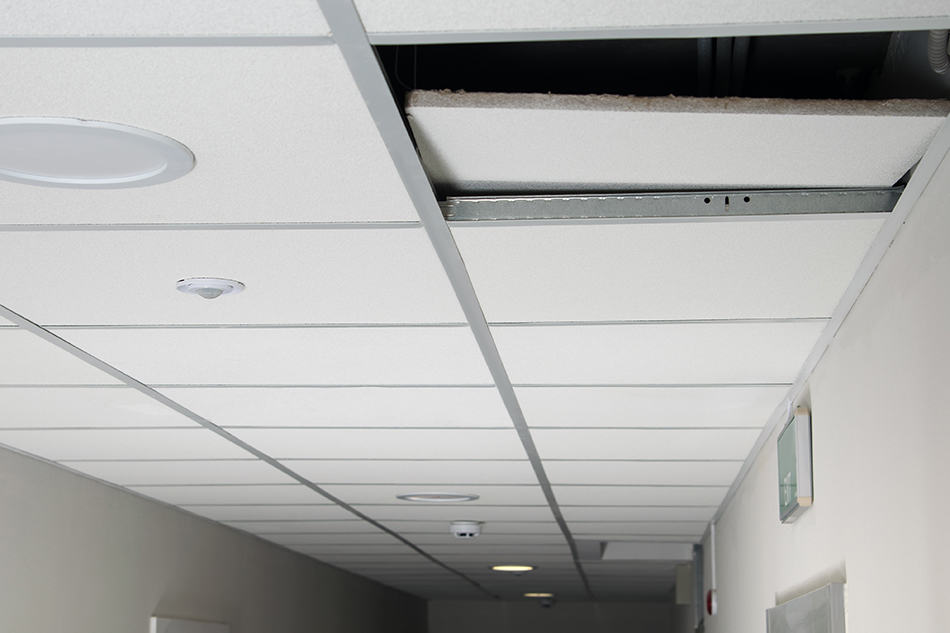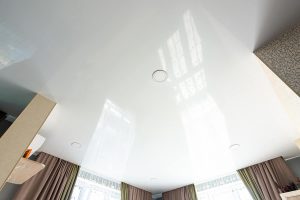Whether you are remodeling your home or made the decision to build a new property, the type of ceiling you should install can be a little confusing.
To transform the feel and look of your home, why not consider a suspended ceiling, otherwise known as a drop ceiling. This ceiling type will add a unique decorative feature to your basement, study room, or even living room.
In this article, we’ll explain more about a drop ceiling, its advantages, and disadvantages, types as well as where to use this ceiling.
What is a Suspended or Drop Ceiling?
Although drop ceilings are commonly seen in commercial buildings, they have many uses for residential properties. Keep reading to find out the biggest advantages of these ceilings.
A suspended or drop ceiling consists of tiles or panels that are installed a few inches below the primary structural ceiling. This type of ceiling isn’t a permanent structural base, but rather, it serves as a feature to cover the main framework above.
Advantages of Drop Ceilings
Easy to Install
Installing a drop or suspended ceiling couldn’t be easier. All you need to do is install metal tracks that are hung above the ground before layering the tiles between the tracks. If you’re not into DIY though, consider getting help from a contractor.
Easy Access
Once you have installed a drop ceiling, you’ll have easy access to the area underneath the ceiling panels. Simply remove the tile or panel and you’re in! So next time you need to put wiring through the ceiling or repair a leaking roof, your drop panels can easily be taken out and put back into place.
Better Soundproofing
Soundproofing between the drop panels allows you to enhance your room’s privacy. This is especially important if you’re thinking of installing a drop ceiling in your theater room or bedroom. The drop-down panels can be insulated using fiberglass in order to further enhance sound absorption.
Conceal Imperfections and Wires
Drop-down ceilings are mainly installed to hide the wires or pipework while providing easy access to the ductwork in case of maintenance or repairs. These panels are now designed in aesthetically pleasing access tiles that are more and more seen in residential homes and not just in commercial buildings.
Drawbacks of Drop Ceilings
Lack of Headroom and Space
Given the way drop ceilings are installed, the panels seem to lower the height of the ceiling and the overall space. These tiles are, therefore, not practical in rooms with slightly lower ceiling height or taller furniture.
Not as Sturdy
The quality of drop ceiling tiles is compromised over practicality due to the lightweight nature of the panels. Since these ceilings allow easy access to the ductwork, they must be light in weight, which impacts the panels’ quality and reduces their sturdiness.
Deteriorate Quicker
One last downside to this ceiling option is how quickly the panels deteriorate when compared to other types of ceilings. This is especially true if there is a leak in the roof, which as a result stains the tiles.
You won’t be able to remove the yellow stains from the tiles, which means they need to be replaced. In addition, the drop down tiles will sag over time and appear droopy. These tiles require replacement every 10 years or so.
Where to Use Drop Ceilings
When it comes to remodeling your ceiling, you may not think of drop down panels as they are often associated with commercial buildings. However, did you know drop ceilings come in many unique designs, such as tin and coffered looks that can bring texture and depth to your interior decor? What’s more, you can choose from a variety of tile colors to coordinate with your floors and walls.
While you can install your drop ceiling tiles in any room, this type of ceiling works best in converted basements or theater rooms. If you’re planning to use your basement as a TV room, you’ll need to think about the acoustics.
A drop-down ceiling is usually made of sound-absorbing materials, which makes this type of ceiling the best choice for such rooms. With such a ceiling, you can conceal all your wires on the floor above the panels for a clean finish.
To minimize the sound deflection of your basement, you can find drop-down ceiling tiles that come with special fiberglass sheets, though they are likely to cost more. But if soundproofing is critical to your room’s environment, a suspended or drop ceiling with an integrated soundproofing feature is the best choice.
Drywall Vs. Drop Ceiling: Which is Better?
Most newly built homes have adequate ceiling height. Therefore, a drop ceiling is not usually an issue for headroom in such homes.
However, in older homes, the height of the ceiling is probably restrictive for such ceiling installations, so you’ll have to maximize the headroom by opting for a drywall ceiling instead of a suspended one. Having said that, if you’re looking to add a unique decorative ceiling feature, then drywall isn’t the best option. Drop or suspended ceilings, on the other hand, are diverse enough in a wide range of colors and decorative designs.
With drop ceiling panels, you can choose from a range of styles to complement your home decor. These ceiling types add depth and texture in your home, and contrary to popular belief, they don’t look outdated or traditional. In fact, the wide variety of tile colors allow you to blend them perfectly with your floors and walls.
Since the ductwork and piping in older homes are normally attached to the bottom of the ceiling joists, hanging drywall directly on the ceiling will no longer give you access to these plumbing and electrical components.
This is one of the main reasons why most homeowners opt for drop ceilings instead of drywall because of their convenient access to the primary framework of the ceiling. What’s more, if there is a leak in the roof, you won’t be able to remove a small section of the drywall. But with drop-down tiles, this is not an issue.
Types of Drop Ceilings
Clip-In Tile Systems
This type of drop ceiling system features metal runner grids paired with metal clips that hold the tiles in place. The clips are usually horseshoe-shaped designs with a small flange that runs outward from the lower section of each leg. The top of the metal clip rests on the metal runner while the two legs extend over the runner’s sides.
The flanges hold the drop ceiling tiles in place. To keep the flanges as aesthetically pleasing as possible, the clip-in tiles use beveled edges to hide the metal framework and give the ceiling a tongue and groove look. The most common materials of clip-in tile systems include vinyl, wooden planks, foam, or metal. This type of drop ceiling is by far the simplest to install, without the need for assistance.
Hook-On Grid
The hook-on type of drop ceiling is ideal for new homes with ceilings that are a few inches higher. For anyone who doesn’t want the ceiling grid to show, the hook-on tiles are the best option.
These systems are compatible with foam, metal, vinyl, and wooden plank ceilings. The installation is a little more difficult than the previous type of drop ceiling so you may need to hire a knowledgeable contractor.
Lay-Ins
By far, the most common type of suspended or drop ceiling is the lay-in system. Unlike the older style lay-in ceilings of the 70s, which featured large tiles made of foam and a visible metal support grid, the modern versions are more aesthetically pleasing and can accommodate a wide variety of textures and styles.
For the installation of lay-ins, simply lay the tiles once adequate support grids have been put into place. This type of drop ceiling is the easiest to maintain as you can just remove the tile or plank and replace it with a new one. Perhaps the most difficult part of the installation is the support grids, so unless you’re an experienced or skilled DIYer, it is best to leave the task to a professional.
How Much Weight Can My Drop Ceiling Handle?
It is not safe to hang items heavier than 7 kilograms as they may warp or damage your drop ceiling grid. To hang heavier items from these ceiling panels, remove the tile before screwing metal plant hangers or hooks into the joist. You can then hang a chain from the hook in order to hold the heavy object.
Should I Insulate My Drop Ceiling?
Yes! If you want to minimize heat loss and lower your energy costs, it is a good idea to insulate your ceiling before installing the drop-down panels.
Consider using ready-made fiberglass sheets to easily insulate in-between the electrical or plumbing pipes and ceiling joists before installing the hanging grids. Insulating a drop ceiling is especially important in basements and bedrooms to reduce heat loss.
What Are Some Alternatives to Drop Ceilings?
If you are not fond of drop ceilings or are looking to replace your existing drop ceilings, then you can explore some noteworthy alternatives to traditional drop ceilings that can significantly enhance the style and functionality of your home.
Beadboard ceilings, with their charming grooves, bring a cozy, cottage-like atmosphere, especially suitable for kitchens and sunrooms. Vaulted or cathedral ceilings are great for creating a sense of spaciousness in larger rooms. Tin ceiling tiles can introduce vintage charm with their various patterns.
Exposed beams or open ceilings offer an industrial or rustic look, adding character to the space. Lastly, the classic choice of plaster and drywall ceilings provides a smooth, paintable surface for a clean and versatile finish. Each option offers unique aesthetic and functional benefits to suit different styles and needs.
